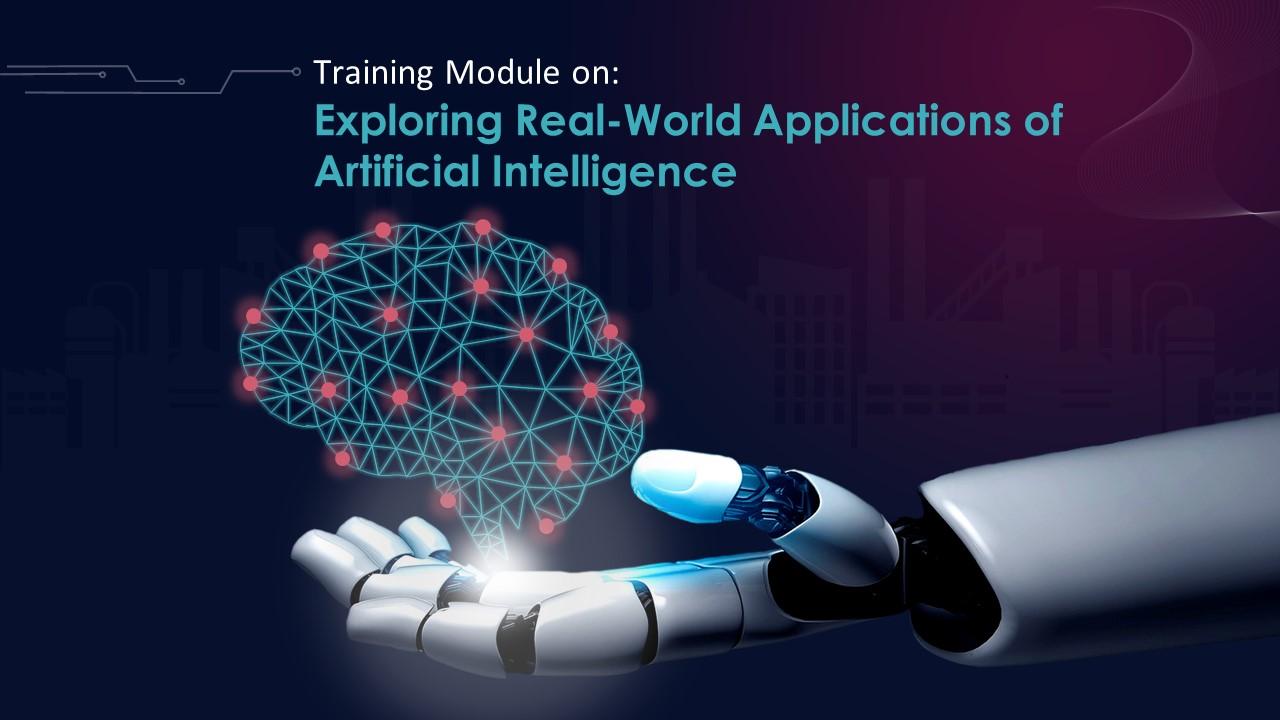Experiential learning is on the rise as educators embrace its real-world applications in the classroom, providing students with hands-on experiences to enhance their learning. In today’s highly competitive job market, theoretical knowledge alone is not enough, and employers are seeking candidates who can apply what they have learned in real-life situations.
Experiential learning bridges this gap by immersing students in activities that allow them to put their knowledge into practice, fostering critical thinking, problem-solving, and collaboration skills. By engaging with real-world scenarios, students gain a deeper understanding of the subject matter and develop the practical skills necessary for future success.
In this article, we will explore the benefits of experiential learning and how it can be effectively integrated into the classroom curriculum.

Credit: www.slideteam.net
Introduction To Experiential Learning
Experiential learning is a powerful educational approach that has gained significant traction in recent years. It transforms traditional classroom learning by immersing students in real-world experiences, fostering critical thinking and practical skill development. By bridging the gap between theory and practice, experiential learning equips students with valuable knowledge and enables them to apply it in tangible ways.
From science experiments to community projects, the possibilities for incorporating experiential learning into the classroom are limitless. Let’s explore what experiential learning entails, how it differs from traditional teaching methods, and examine some compelling examples of its real-world applications.
Benefits Of Experiential Learning In Education
Enhancing Student Engagement And Motivation.
Experiential learning offers several benefits to students, enhancing their engagement and motivation in the classroom. By involving students in hands-on activities and real-world experiences, they become active participants in their own learning journey. Here are some key points to consider:
- Students are more likely to be engaged and motivated when they can see the practical applications of what they are learning. Experiential learning enables students to connect concepts and theories to real-life situations, making the learning process more meaningful and relevant.
- Through experiential learning, students are encouraged to take ownership of their education. They become active learners, exploring and discovering knowledge through their own experiences. This sense of autonomy and agency fosters a greater level of engagement and motivation in the classroom.
- Experiential learning promotes active participation and interaction among students. Whether they are conducting experiments, solving problems, or engaging in simulations, students are actively involved in the learning process. This hands-on approach not only captures their interest but also encourages them to take responsibility for their learning.
- By providing opportunities for practical application, experiential learning helps bridge the gap between theory and practice. Students have the chance to apply their knowledge in real-world scenarios, allowing them to see the direct impact of their learning. This connection to practicality further motivates students to engage and excel in their studies.
Experiential learning enhances student engagement and motivation through its focus on real-world applications and active participation. By making learning more hands-on and practical, students develop a deeper understanding of concepts and are motivated to excel in their academic pursuits.
Incorporating Experiential Learning In The Curriculum
In today’s rapidly changing world, traditional methods of teaching no longer suffice. Educators are discovering the power of experiential learning to engage and motivate students. By incorporating hands-on activities, field trips, simulations, technology, and project-based learning, teachers can provide real-world applications in the classroom, making learning an exciting and immersive experience.
Let’s explore some key strategies for integrating experiential learning into the curriculum:
Integrating Hands-On Activities Across Subjects:
- Engage students through interactive exercises and experiments.
- Encourage active participation and critical thinking skills.
- Foster teamwork and collaboration in problem-solving scenarios.
- Provide a tangible understanding of theoretical concepts.
Engaging Students Through Field Trips And Simulations:
- Take learning beyond the classroom walls.
- Allow students to explore real-world environments and situations.
- Stimulate curiosity and provide practical application of knowledge.
- Facilitate experiential learning in a controlled and safe setting.
Utilizing Technology To Enhance Experiential Learning:
- Harness the power of educational apps, virtual reality, and online resources.
- Bring virtual experiences, simulations, and interactive exercises to the fingertips of students.
- Enable access to a vast array of information and global perspectives.
- Foster digital literacy and prepare students for the digital age.
Encouraging Project-Based Learning:
- Provide opportunities for in-depth exploration and creative problem-solving.
- Engage students in long-term, self-directed projects.
- Promote independent thinking, research skills, and time management.
- Ensure the application of knowledge to real-life scenarios.
Developing Partnerships With Local Businesses And Organizations:
- Forge connections between the classroom and the real world.
- Collaborate with professionals to offer real-world insights and expertise.
- Provide opportunities for mentorship and career development.
- Foster a sense of community and engagement with the local context.
By incorporating experiential learning in the curriculum, educators can create a dynamic learning environment that cultivates critical thinking, innovation, and lifelong learning skills. Students will not only absorb knowledge but also develop the ability to apply it to real-world situations, equipping them with the necessary skills for success in the 21st century.
Success Stories: Experiential Learning In Action
The Rise Of Experiential Learning: Real-World Applications In The Classroom
Experiential learning is revolutionizing education by bridging the gap between theory and practice. By incorporating hands-on activities and real-world applications, educators are enabling students to develop crucial skills that go beyond textbooks. In this blog post, we will explore the success stories of schools that have implemented experiential learning, the positive outcomes it has had on students, and the testimonials from teachers, students, and parents.
Additionally, we will delve into real-world examples of successful projects and initiatives, showcasing the power and effectiveness of experiential learning.
Case Studies Of Schools Implementing Experiential Learning:
- A primary school in a rural community transformed its science curriculum by introducing a garden project. Students were actively involved in planting, nurturing, and harvesting vegetables. This hands-on approach not only enhanced their understanding of scientific concepts but also instilled a sense of responsibility towards the environment.
- A high school in an urban area integrated a digital marketing campaign into their business studies. Students were divided into groups and tasked with creating and running a social media campaign for a local business. This experiential learning opportunity allowed them to apply their knowledge in a real-world context and develop essential marketing skills.
Positive Outcomes And Impact On Students:
- Enhances critical thinking: Experiential learning encourages students to think critically and solve problems by applying their knowledge in practical situations. This fosters a deeper understanding of concepts and improves their analytical skills.
- Promotes collaboration: Students engage in teamwork and collaboration while working on experiential learning projects. This cultivates effective communication, cooperation, and leadership skills, all of which are vital for success in future careers.
Testimonials From Teachers, Students, And Parents:
- “since implementing experiential learning in my classroom, i have witnessed a remarkable difference in my students’ engagement and enthusiasm for learning. They are eager to dive into real-world projects and readily apply what they have learned.” – ms. johnson, high school teacher.
- “experiential learning has allowed my child to grasp complex concepts with ease. The hands-on approach has made learning enjoyable, and it is evident that their confidence has soared as a result.” – mr. davis, parent.
Real-World Examples Of Successful Projects And Initiatives:
- A biology class partnering with a local zoo to study animal behavior firsthand.
- A history class organizing a living history museum, where students portray important historical figures and events.
- A robotics club participating in regional competitions, where they design and program robots to complete specific tasks.
Experiential learning provides students with valuable skills, memorable experiences, and a deeper understanding of the subjects at hand. Through hands-on projects and real-world applications, schools are equipping their students for success in the modern world. By using innovative methods that engage and inspire, educators are transforming the classroom into an interactive learning environment that empowers students to thrive.
Overcoming Challenges And Limitations
Experiential learning has gained immense popularity in recent years due to its ability to bridge the gap between theory and practice in the classroom. This approach emphasizes hands-on, real-world experiences that allow students to actively engage in their own learning process.
However, like any educational innovation, there are challenges and limitations that need to be addressed in order to fully integrate experiential learning into the curriculum. In this section, we will explore some of these challenges and discuss strategies for overcoming them.
Lack Of Resources And Funding:
- Limited resources often pose a significant challenge when it comes to implementing experiential learning in the classroom.
- Insufficient funding can hinder the availability of materials, equipment, and opportunities for students.
- The lack of resources may limit the range and depth of experiential activities that can be offered.
Incorporating Experiential Learning In Standardized Testing:
- The emphasis on standardized testing can sometimes discourage educators from incorporating experiential learning activities.
- Traditional assessments may not fully capture the skills and knowledge acquired through experiential learning.
- Finding ways to align experiential learning outcomes with standardized testing requirements is a challenge that needs to be addressed.
Addressing Concerns About Evaluation And Assessment:
- Evaluating and assessing experiential learning outcomes can be a subjective process.
- Developing robust evaluation criteria and methodologies to measure the effectiveness of experiential learning activities is imperative.
- Balancing the need for qualitative and quantitative assessments poses a challenge for educators.
Training And Professional Development For Teachers:
- Teachers require training and support to effectively implement experiential learning strategies.
- Professional development programs need to provide educators with the necessary skills and knowledge to design and facilitate experiential learning activities.
- Ensuring that teachers have access to ongoing training and resources is crucial for successful implementation.
Ensuring Equitable Access To Experiential Learning Opportunities:
- Equity issues can arise when certain students have limited access to experiential learning opportunities due to geographical, socioeconomic, or other factors.
- Efforts should be made to ensure that all students have equal access to experiential learning experiences.
- Collaborating with community organizations and leveraging technology can help overcome barriers and provide equitable access.
While experiential learning offers numerous benefits, there are challenges and limitations that need to be addressed. By tackling issues such as lack of resources, aligning with standardized testing, addressing evaluation concerns, providing training for teachers, and ensuring equitable access, educators can successfully overcome these challenges and fully embrace the power of experiential learning in the classroom.
Frequently Asked Questions On The Rise Of Experiential Learning: Real-World Applications In The Classroom
What Is Experiential Learning And Why Is It Important?
Experiential learning is a hands-on approach to education that emphasizes real-world application of knowledge. It is important because it allows students to develop critical thinking skills, problem-solving abilities, and practical experience in their chosen field of study.
How Does Experiential Learning Enhance Student Engagement?
Experiential learning enhances student engagement by providing opportunities for active participation, collaboration, and practical application of concepts. It allows students to connect with the subject matter on a deeper level and promotes a sense of ownership and motivation in the learning process.
Can Experiential Learning Be Applied To All Subjects And Grade Levels?
Yes, experiential learning can be applied to all subjects and grade levels. Whether it’s conducting experiments in science, role-playing in history, or participating in community service projects, there are various ways to incorporate experiential learning into different curricula and educational levels.
Are There Any Challenges Involved In Implementing Experiential Learning?
Implementing experiential learning may require additional resources, time, and planning. It can also be challenging to assess and evaluate student learning outcomes in a tangible manner. However, with proper support and guidance, these challenges can be overcome, and the benefits of experiential learning can be maximized.
What Are Some Examples Of Experiential Learning Activities?
Examples of experiential learning activities include field trips, internships, case studies, simulations, group projects, and problem-solving exercises. These activities allow students to apply their knowledge in real-world scenarios and gain practical skills that will benefit them in their academic and professional journeys.
How Can Educators Incorporate Experiential Learning In The Classroom?
Educators can incorporate experiential learning in the classroom by designing interactive lessons, incorporating hands-on activities, collaborating with local businesses or organizations, and using technology to create immersive learning experiences. They can also provide opportunities for reflection and debriefing to enhance the learning process.
Conclusion
Overall, the rise of experiential learning is revolutionizing the education system by emphasizing real-world applications in the classroom. By providing students with opportunities to engage in hands-on experiences, educators can bridge the gap between theory and practice, fostering a deeper understanding of concepts and equipping students with valuable skills for their future careers.
Experiential learning empowers students to take ownership of their education, promoting critical thinking, problem-solving, and collaboration. The integration of technology further enhances the learning experience, allowing students to explore interactive simulations and virtual reality environments. As a result, students are better prepared to navigate the complexities of a rapidly evolving world, equipped with the knowledge, skills, and adaptability necessary to succeed.
Moreover, the benefits of experiential learning extend beyond academic success, encompassing personal growth, character development, and increased motivation. With this innovative approach to education, educators are shaping the next generation of leaders, thinkers, and problem solvers. The future of learning lies in experiential education, where students are not just passive recipients of information but active participants in their own learning journey.
Through the power of experiential learning, classrooms can be transformed into dynamic, engaging spaces that nurture and inspire students to reach their full potential.













